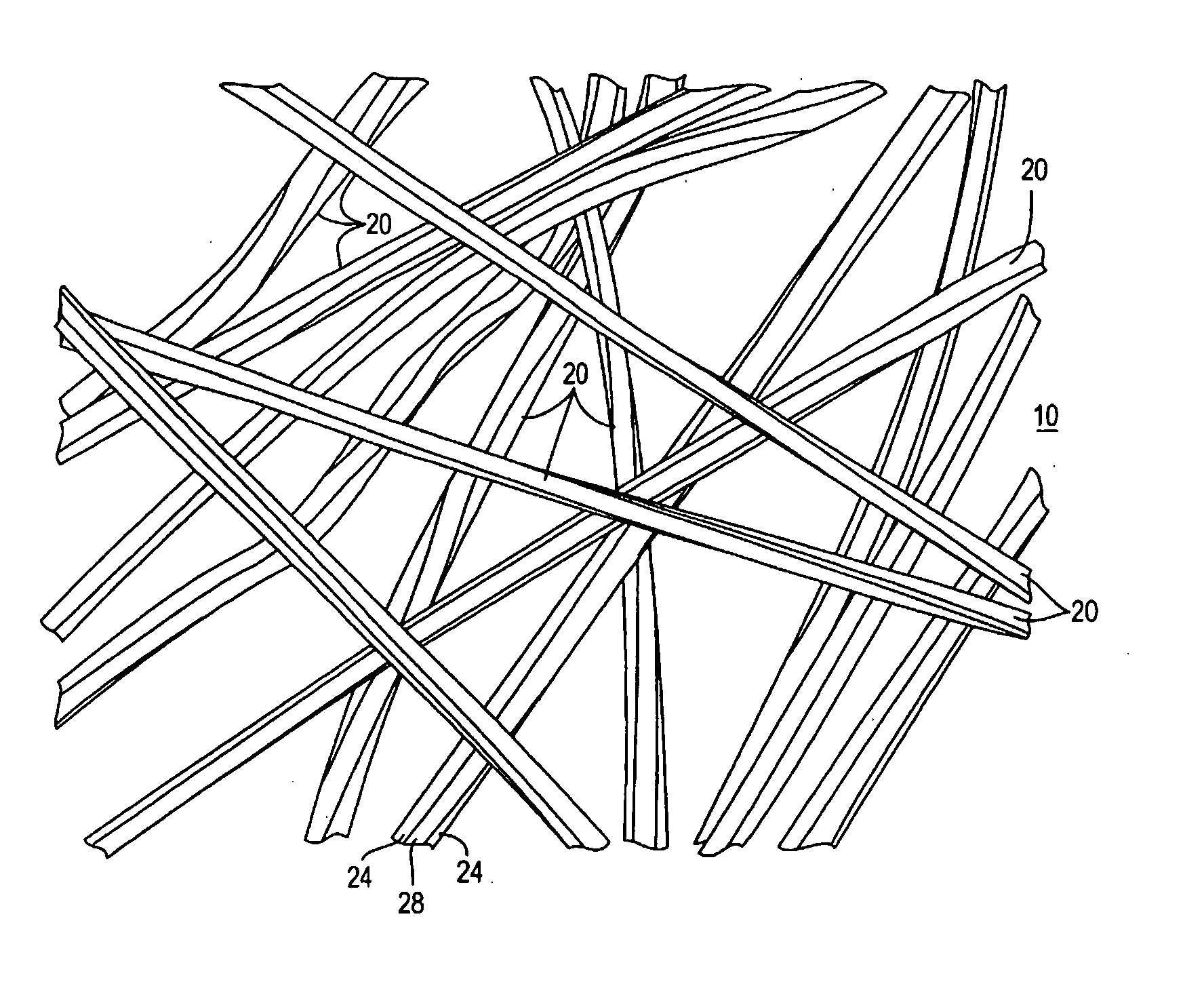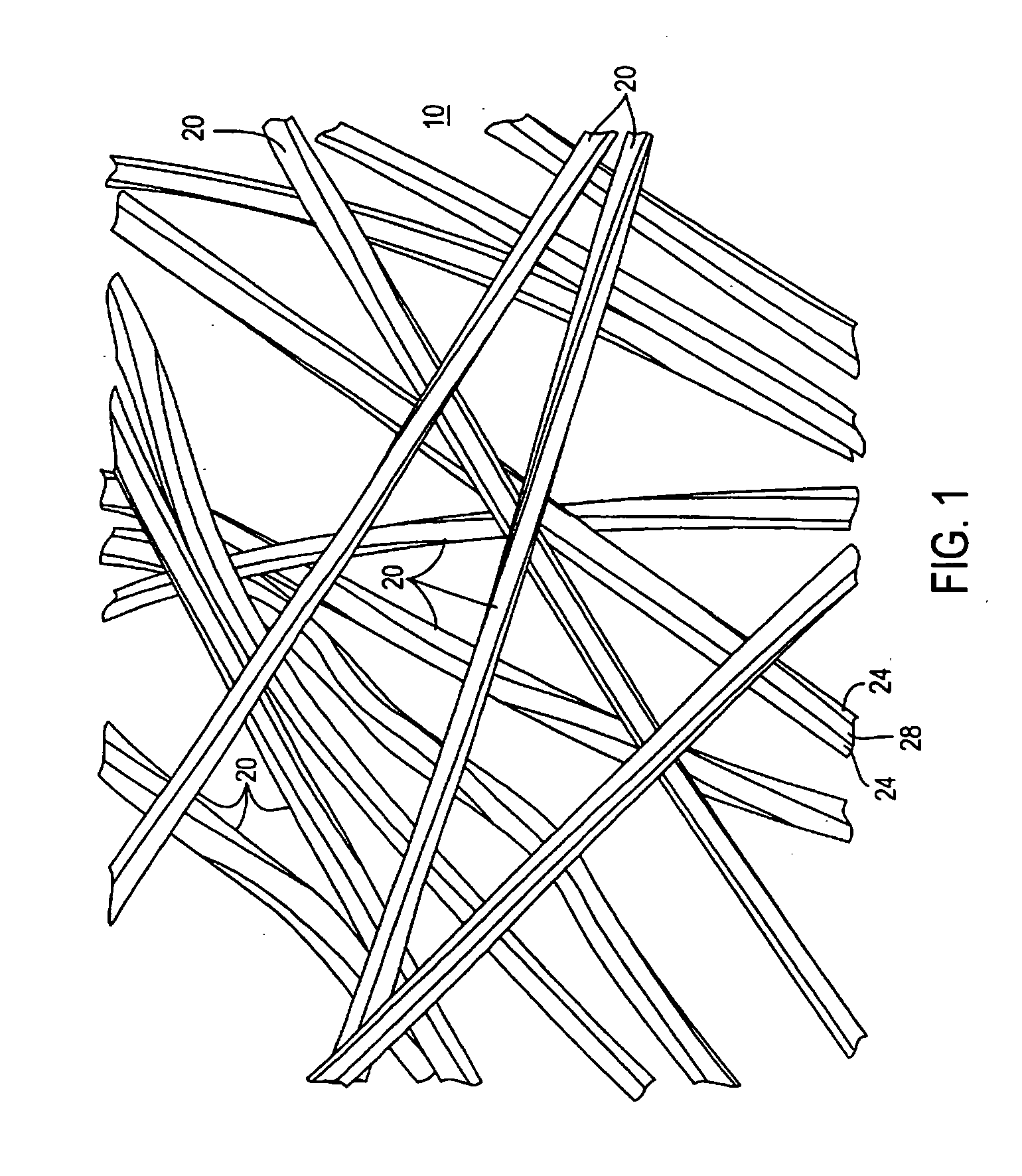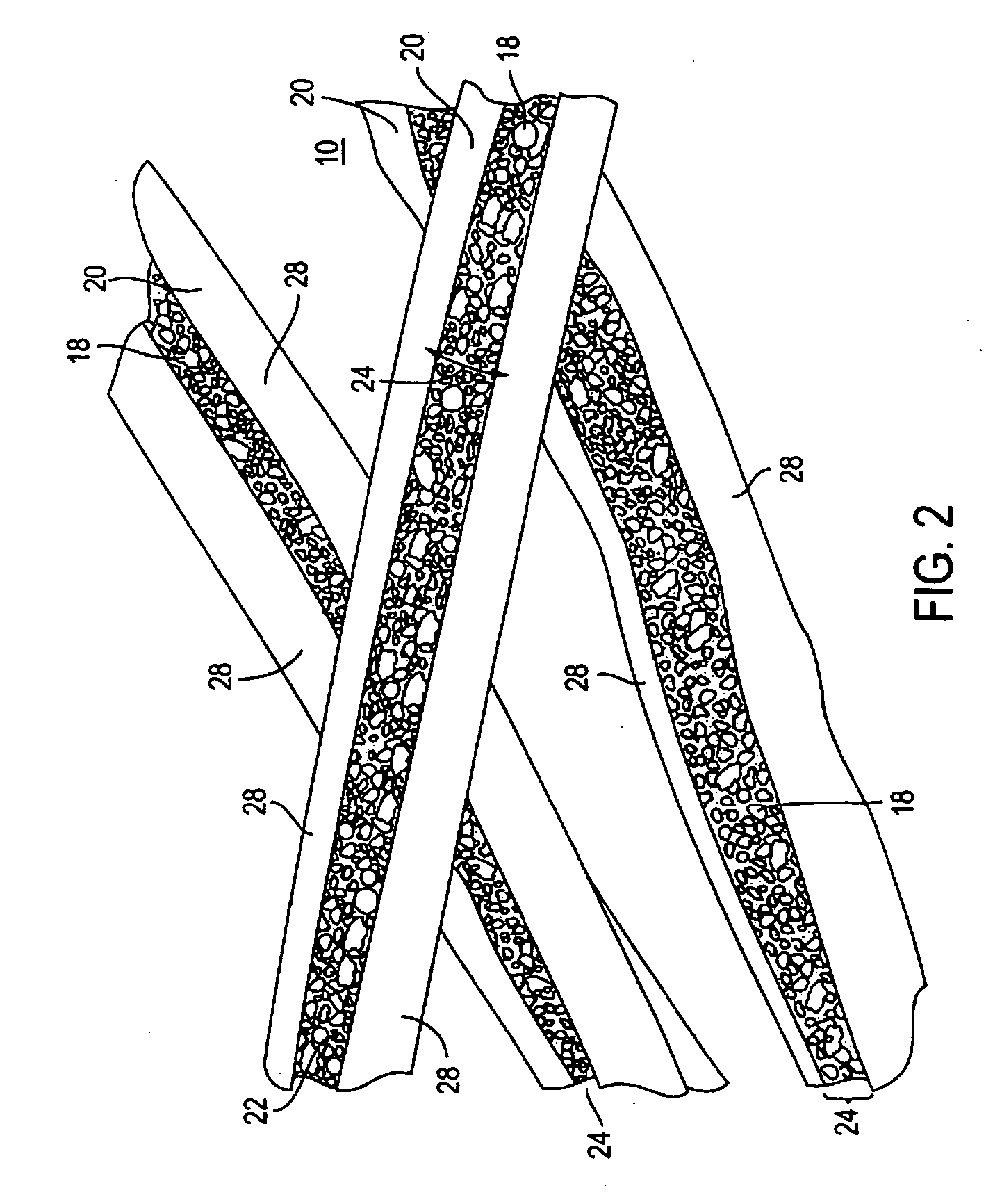Protective fabrics
a technology of protective fabrics and fabrics, applied in the field of protective fabrics, can solve the problems of high-risk biological and chemical warfare agents, chemical warfare agents that are developed and stored, nerve agents that are particularly toxic, and general colorless
- Summary
- Abstract
- Description
- Claims
- Application Information
AI Technical Summary
Benefits of technology
Problems solved by technology
Method used
Image
Examples
example 1
[0036] A nonwoven fabric is produced comprising a linear array of TRIAD® nylon 6 fibers impregnated with a mixture of a strong oxidizing agent with a surfactant in an alkaline environment as the decontamination reagent. The reagent employed has activity for a broad range of chemical warfare agents. The linear array filter has a configuration, as shown in FIG. 1. A three layer composite is produced comprising an outer sheet of a nonwoven polyethylene to provide the water impermeability, the nonwoven layer of TRIAD® fibers impregnated with the mixture of decontamination reagent, and a woven backing made from Spectra® fiber available from Honeywell International. The three layers are sealed together at a hem such that it prevents the decontamination reagent from passing through the hem.
PUM
| Property | Measurement | Unit |
|---|---|---|
| Size | aaaaa | aaaaa |
| Size | aaaaa | aaaaa |
| Length | aaaaa | aaaaa |
Abstract
Description
Claims
Application Information
 Login to View More
Login to View More - R&D
- Intellectual Property
- Life Sciences
- Materials
- Tech Scout
- Unparalleled Data Quality
- Higher Quality Content
- 60% Fewer Hallucinations
Browse by: Latest US Patents, China's latest patents, Technical Efficacy Thesaurus, Application Domain, Technology Topic, Popular Technical Reports.
© 2025 PatSnap. All rights reserved.Legal|Privacy policy|Modern Slavery Act Transparency Statement|Sitemap|About US| Contact US: help@patsnap.com



